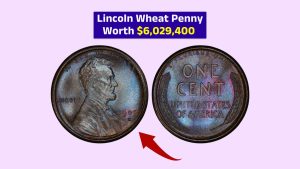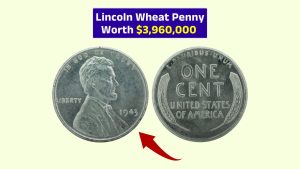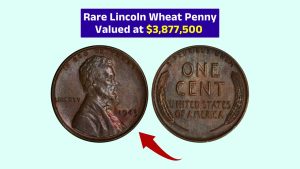Imagine reaching into your pocket and pulling out a simple penny — only to observe it’s worth $4,750,000. Sounds like a dream, right? But that dream might still be hiding in plain sight.
One rare Lincoln Wheat Penny, valued at nearly five million dollars, is rumored to still be floating around in everyday circulation. Whether you’re a seasoned collector or just someone who likes to check their change, this is one coin story you won’t want to ignore.
History
The Lincoln Wheat Penny made its debut in 1909, marking the 100th anniversary of Abraham Lincoln’s birth. It was a game-changer — the first U.S. coin to feature a real person instead of an allegorical figure.
Victor David Brenner designed it with Lincoln’s portrait on the front and two stalks of wheat on the back, symbolizing abundance and national pride.
These iconic pennies were minted from 1909 until 1958, and they remain a favorite among collectors. While most Wheat Pennies are only worth a few cents over face value, a rare few can sell for thousands — and one specific version is now valued at a staggering $4.75 million.
Value
So why is this penny worth millions? It all comes down to a mix of rarity, history, and a bit of minting mystery. The penny in question is believed to be a 1943 Bronze Lincoln Wheat Penny — one of the most famous error coins in numismatic history.
During World War II, copper was needed for wartime production, so the U.S. Mint started making pennies from steel coated with zinc.
But a few copper planchets (the blank discs coins are made from) accidentally got mixed into the press. The result? A few 1943 pennies made of bronze instead of steel — and they’re incredibly rare.
Here’s how some top rarities stack up:
| Coin Type | Estimated Value |
|---|---|
| 1943 Bronze Penny | Up to $4,750,000 |
| 1909-S VDB | $700 to $2,000+ |
| 1914-D | $300 to $3,000+ |
| 1922 No D | $500 to $6,000+ |
Only a handful of 1943 bronze pennies have been found, and collectors pay big for them. It’s not just about the metal — it’s the story behind it that adds value.
Circulation
Here’s the wild part — one of these ultra-valuable pennies could still be out there. Because pennies tend to be overlooked and undervalued, it’s entirely possible someone has this treasure tucked away in a jar, purse, or old change drawer without realizing its worth.
Most people don’t check their change closely, and when you’re handling dozens of coins a day, it’s easy to miss the details. That’s why coin experts believe one or more of these $4.75 million pennies could still be hiding in plain sight.
Spotting
So how do you know if you’ve hit the jackpot? Keep an eye out for these signs:
- Date and Appearance: If you see “1943” and the penny looks brown (not silver), take a closer look.
- Magnet Test: Steel sticks to magnets. Bronze doesn’t. A 1943 penny that doesn’t stick might be the real deal.
- Weight: Bronze pennies weigh about 3.11 grams. Steel ones weigh around 2.7 grams.
- Condition: A better condition means higher value. Grading matters — MS65 and above are top-tier.
- Get Help: If you suspect you’ve found one, don’t guess. Contact a coin grading service for authentication.
Fascination
What makes the Lincoln Wheat Penny so fascinating isn’t just its design or age — it’s the story it tells. This one little coin combines history, human error, and the chance of unbelievable fortune. It reminds us that even something as small as a penny can hold enormous value.
In today’s world of crypto and digital wallets, the idea that a tiny copper coin could be worth millions is almost poetic. It’s a nod to the past, a symbol of possibility, and a reason to pay attention to what others overlook.
So next time you get change at the grocery store or empty out your pockets at the end of the day, take a second to look. You might just be holding the $4.75 million Lincoln Wheat Penny — and your own piece of American history.
FAQs
What makes the 1943 penny rare?
It was accidentally made from bronze during a wartime switch to steel.
How do I test if my 1943 penny is bronze?
Use a magnet — bronze won’t stick, steel will.
How much does a 1943 bronze penny weigh?
About 3.11 grams compared to 2.7g for steel ones.
Can I still find rare pennies in change?
Yes, rare coins can still be found in circulation today.
Who designed the Lincoln Wheat Penny?
Victor David Brenner created it in 1909.



